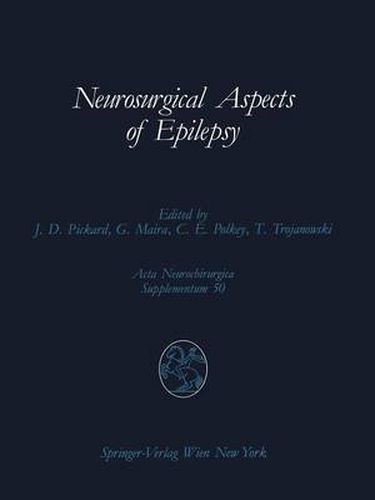Readings Newsletter
Become a Readings Member to make your shopping experience even easier.
Sign in or sign up for free!
You’re not far away from qualifying for FREE standard shipping within Australia
You’ve qualified for FREE standard shipping within Australia
The cart is loading…






This title is printed to order. This book may have been self-published. If so, we cannot guarantee the quality of the content. In the main most books will have gone through the editing process however some may not. We therefore suggest that you be aware of this before ordering this book. If in doubt check either the author or publisher’s details as we are unable to accept any returns unless they are faulty. Please contact us if you have any questions.
The 4th Advanced Seminar in Neurosurgical Research was held on May 17th-18th, 1989 in the Abbey of Praglia, a XIIth century Benedictine Monastery, near Padua, Italy, and was devoted to Neurosurgical Aspects of Epilepsy . The general aim of these Advanced Seminars is to bring together European Neurosurgeons interested or involved in research, either clinically, experimentally or both, in a given field in order to achieve in-depth informal discussions not possible in the more conventional large congress. In particular, these Advanced Seminars seek to provide high level teaching by experienced basic scientists, to provide state of the art assessment of the subject and to highlight areas of controversy that might be suitable for future research. A special effort is made to identify younger Neurosurgeons, partly through the auspices of the European Directory of Neurosurgical Research, who have a particular interest in the subject under discussion, not all of whom will have immediate access to the most advanced, modern technology. Surgical treatment of epilepsy is an expanding area of endeavour and an expertise that remains underutilized in many countries. The programme for this Seminar was designed to paint the broad background, moving from basic membrane electrophysiology through to cost benefit analysis and rehabilitation. The perspectives of neu ropathology, neurology, neuroradiology, nuclear medicine, neuropsychology, neurophysiology and the drug in dustry are all included.
$9.00 standard shipping within Australia
FREE standard shipping within Australia for orders over $100.00
Express & International shipping calculated at checkout
This title is printed to order. This book may have been self-published. If so, we cannot guarantee the quality of the content. In the main most books will have gone through the editing process however some may not. We therefore suggest that you be aware of this before ordering this book. If in doubt check either the author or publisher’s details as we are unable to accept any returns unless they are faulty. Please contact us if you have any questions.
The 4th Advanced Seminar in Neurosurgical Research was held on May 17th-18th, 1989 in the Abbey of Praglia, a XIIth century Benedictine Monastery, near Padua, Italy, and was devoted to Neurosurgical Aspects of Epilepsy . The general aim of these Advanced Seminars is to bring together European Neurosurgeons interested or involved in research, either clinically, experimentally or both, in a given field in order to achieve in-depth informal discussions not possible in the more conventional large congress. In particular, these Advanced Seminars seek to provide high level teaching by experienced basic scientists, to provide state of the art assessment of the subject and to highlight areas of controversy that might be suitable for future research. A special effort is made to identify younger Neurosurgeons, partly through the auspices of the European Directory of Neurosurgical Research, who have a particular interest in the subject under discussion, not all of whom will have immediate access to the most advanced, modern technology. Surgical treatment of epilepsy is an expanding area of endeavour and an expertise that remains underutilized in many countries. The programme for this Seminar was designed to paint the broad background, moving from basic membrane electrophysiology through to cost benefit analysis and rehabilitation. The perspectives of neu ropathology, neurology, neuroradiology, nuclear medicine, neuropsychology, neurophysiology and the drug in dustry are all included.